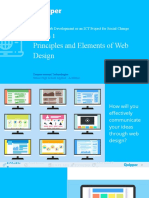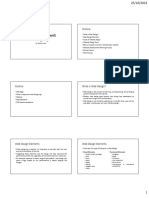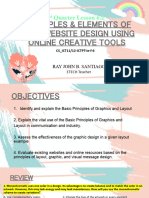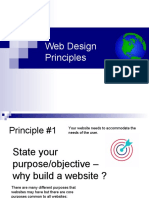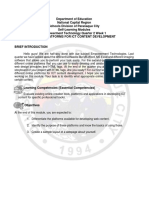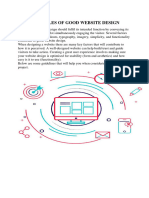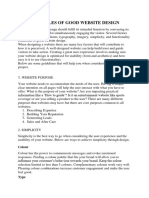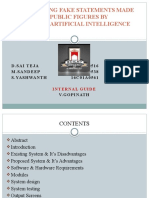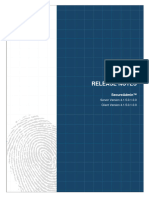0% found this document useful (0 votes)
24 views45 pagesWeb Design Principles
The document outlines the principles and elements of web design, emphasizing the importance of effective communication through aesthetically pleasing and user-friendly websites. It discusses the classifications of web design, namely adaptive and responsive, and details key principles such as simplicity, intuitive navigation, and visual hierarchy. Additionally, it highlights essential elements like content, typography, and layout that contribute to a successful web design.
Uploaded by
Alken MaalaCopyright
© © All Rights Reserved
We take content rights seriously. If you suspect this is your content, claim it here.
Available Formats
Download as PDF, TXT or read online on Scribd
0% found this document useful (0 votes)
24 views45 pagesWeb Design Principles
The document outlines the principles and elements of web design, emphasizing the importance of effective communication through aesthetically pleasing and user-friendly websites. It discusses the classifications of web design, namely adaptive and responsive, and details key principles such as simplicity, intuitive navigation, and visual hierarchy. Additionally, it highlights essential elements like content, typography, and layout that contribute to a successful web design.
Uploaded by
Alken MaalaCopyright
© © All Rights Reserved
We take content rights seriously. If you suspect this is your content, claim it here.
Available Formats
Download as PDF, TXT or read online on Scribd
/ 45

